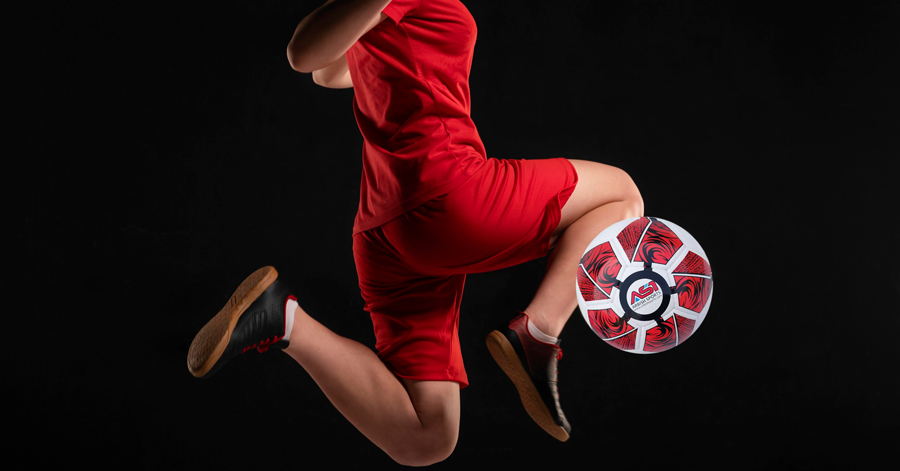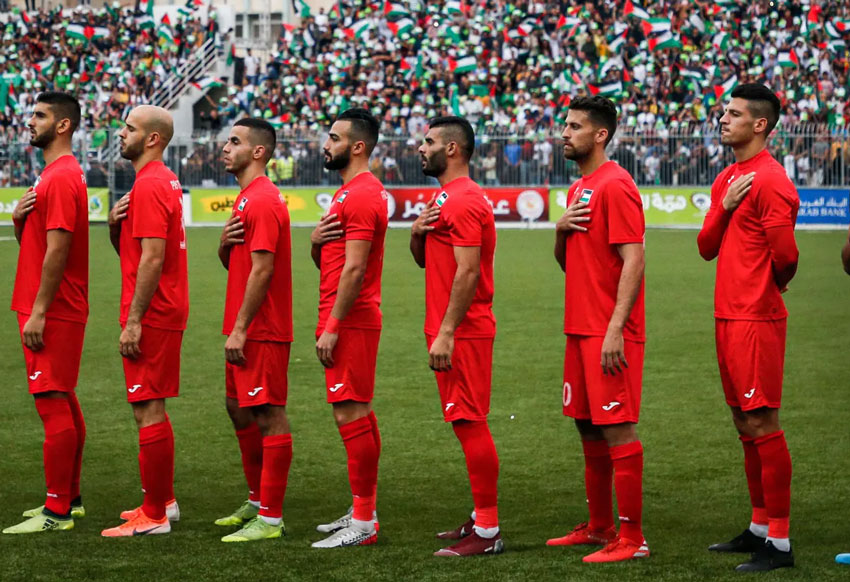A Ranking of Soccer Kits Through History: Exploring Soccer Fandom

Table of Contents
ToggleMore Than Just Threads: Soccer Fandom Through the Lens of Soccer Kits
Soccer, revered as more than just a game, represents a realm where identity, culture, and politics intertwine through team choices, chants, and symbols. Among the most distinctive elements of soccer fandom lies the uniform—known as the soccer kit—worn by fans to support their beloved clubs or national teams. In this blog post, we’ll delve into how soccer uniforms mirror and influence fan culture, ranking some of the most iconic and controversial soccer kits in soccer’s rich history.
Historical Evolution
The journey of soccer uniforms spans eras, from woolen jerseys of yesteryears to today’s advanced, high-tech fabrics. Each period echoes cultural shifts, technological strides, and design revolutions.
Iconic Soccer Kits
Certain jerseys transcend time, becoming timeless classics. Think Brazil’s golden yellow, Barcelona’s iconic Blaugrana stripes, or Manchester United’s enduring red. These kits are emblematic, embodying the essence of the team’s identity.

Innovation in Soccer Uniform Design
Modern kits seamlessly merge style and functionality. Innovations like moisture-wicking fabrics, tailored fits, and eco-friendly materials enhance performance while setting fashion trends.
Cultural Significance
Soccer uniforms often mirror cultural heritage and national pride. The intricate details, colors, and symbols carry profound historical and societal meanings.
Fan Connection
A deep emotional tie exists between fans and their team’s uniform. Supporters proudly sport their team’s colors, fostering a connection that transcends borders and languages.
Collector’s Items
Soccer jerseys have transformed into coveted collector’s pieces. Retro kits and limited-edition releases hold significant value for enthusiasts, showcasing the enduring allure of these uniforms.
Impact of Sponsorship
Sponsorship deals have reshaped soccer uniforms, introducing corporate logos and branding. While commercializing kits, these partnerships have provided clubs with financial stability.
Fan Replicas and Merchandise
The availability of replica jerseys and merchandise allows fans to feel intimately linked to their team. It’s commonplace to see supporters proudly displaying their team’s colors, signaling allegiance.
Future Trends
Continued technological and fashion advancements will likely shape the evolution of soccer uniforms. Expect sustainability, inclusivity, and innovative designs to lead the way for these iconic kits.
Reflecting and Shaping Fan Culture
Soccer uniforms serve as more than functional attire on the pitch. They convey messages about teams and their fans, aligning with social identity theory. Fans utilize kits to display group membership, differentiate from rival groups, or make political statements.
Influence of Context
These uniforms are influenced by social, political, and historical contexts. They represent regional or national identities, such as FC Barcelona’s Catalan flag or Celtic FC’s green and white hoops. They also serve as a platform for political statements or reflections of a team’s fortune changes.
Iconic and Controversial Kits: Beyond Pele and Checkerboards
While Pele’s golden yellow and Denmark’s bold halves continue to resonate, the world of iconic and controversial kits keeps evolving, reflecting not just design trends but also cultural tensions and current events. Here’s a look at some recent additions to the pantheon:
Global Recognition:
USA ’94 “Dream Team” Jersey: The white jersey with bold stars and red accents symbolized American confidence and optimism, worn by legends like Claudio Reyna and Alexi Lalas, even influencing fashion with its street appeal.
Japan 2022 World Cup Kit: The origami-inspired design on the blue jerseys showcased Japanese cultural heritage, capturing global attention for its intricate beauty.
Pushing Boundaries:
Juventus 2019-20 “Zebra Stripe” Kit: The bold black and white stripes defied traditional kit design, sparking debate but solidifying Juventus’ status as fashion-forward trendsetters.
Chelsea 2023-24 “Psychedelic” Third Kit: The trippy kaleidoscope print pushed the boundaries of visual experimentation, dividing fans between admirers of its boldness and critics of its practicality.
Symbolism Beyond the Pitch:
Ukraine 2022-23 Kit: The yellow away jersey featured the blue and yellow Ukrainian flag, a powerful symbol of solidarity and resistance against the ongoing conflict.
Palestine 2023 Kit:
- A Symbol of Unity and Identity: The kit transcends the realm of sports, unifying Palestinians around the world under a single banner. It allows them to proudly display their heritage and connect with their roots, regardless of geographic location.
- Raising Awareness and Promoting Dialogue: The kit sparks crucial conversations about the Palestinian cause, drawing attention to their ongoing struggle for freedom and justice. It encourages dialogue and understanding, potentially bridging divides and fostering empathy.
- Harnessing the Power of Sports: By utilizing the global platform of soccer, the kit amplifies the Palestinian voice and reaches a wider audience. It showcases their passion for the beautiful game and demonstrates their desire to be treated like any other national team.
- A Beacon of Hope: The kit represents a message of hope for a brighter future. It signifies the Palestinian people’s unwavering belief in their right to self-determination and their determination to achieve it.

Of course, the inclusion of the map has stirred debate and faced opposition from some corners. However, rather than shying away from this conversation, it’s important to acknowledge the complex history and perspectives at play. Ultimately, the kit empowers the Palestinian people to share their story, advocate for their rights, and contribute to a more just and equitable world.
The 2023 Palestine training kit is more than just a piece of athletic wear. It’s a powerful symbol of resilience, hope, and the unwavering pursuit of justice. It reminds us that sports have the power to transcend boundaries and become a catalyst for positive change. As we celebrate the beautiful game, let us also acknowledge the stories and struggles woven into its very fabric.
Let the kit serve as a starting point for meaningful conversations, promoting understanding and empathy for the Palestinian people’s aspirations. By recognizing their voice and supporting their right to self-determination, we can all contribute to a more inclusive and just world, where the beautiful game truly unites us all.
Remember, the “iconic” vs. “controversial” divide often blurs – what initially faces criticism can later achieve cult status. These examples show how soccer kits continue to be more than just fabric, serving as canvases for cultural expression, global recognition, and even political statements.
Soccer uniforms have stirred admiration, criticism, and debate. Some hailed for design, performance, or symbolism, while others faced backlash for their aesthetics or impracticality.
Brazil 1970: The golden yellow, blue shorts, and white socks of Brazil’s 1970 World Cup kit symbolized unity and diversity, worn by legendary players like Pele, Jairzinho, and Rivelino during their triumphant campaign.
Nigeria 2018: The green and white zig-zag patterned shirt, a celebration of Nigerian culture, sold out within minutes of release during the 2018 World Cup in Russia.
Denmark 1986: The striking red and white half-and-half shirt worn during the 1986 World Cup reflected Denmark’s departure from traditional designs, adorning talented players like Michael Laudrup and Preben Elkjaer.
Croatia 1998: The red and white checkered shirt represented Croatian identity, worn during their remarkable third-place finish in the 1998 World Cup.
Cameroon 2002: The controversial sleeveless green shirt stirred debate, highlighting the Indomitable Lions’ tribute during the 2002 African Cup of Nations.
Mexico 1994: The garish green, white, and red patterned shirt worn in the 1994 World Cup received criticism for its design complexity.
Soccer uniforms are more than just clothing; they’re a cultural phenomenon that transcends the boundaries of sport. Their impact on fandom, fashion, and identity remains unparalleled, making them a vital component of the beautiful game.
Soccer uniforms serve as cultural symbols transcending mere sportswear. Their impact on fandom, fashion, and identity remains unparalleled, deeply ingrained in the fabric of the beautiful game, resonating with fans worldwide.
- Facebook
- Twitter
- Linkedin
- Whatsapp





